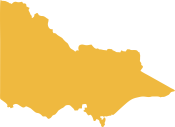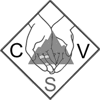Crag Stewards Victoria acknowledges the Taungurung People as the Traditional Owners of the land described below and their ongoing connections with it. We acknowledge the continuation of cultural, spiritual and educational practices of the Taungurung people and we pay respect to their Elders, past present and emerging.
Climbing Areas in Taungurung Country
Taungurung Country is in North East Victoria and includes major climbing areas such as:
Camels Hump (Mt Macedon) is also regarded as a significant place to Taungurung People
A number of less frequented climbing areas also exist on Taungurung Country that are not actively monitored by CSV but we would encourage climbers to make us aware of any issues associated with threats to cultural or environmental values in these areas.
- Granite Highlands (Teneriffe, Big Hill and other outcrops in this area)
- Warragul Rocks
- Pulpit Rock

Traditional Owners
Information provided on Taungurung country and peoples has been sourced from the Taungurung website: https://taungurung.com.au .We encourage climbers to visit the website to gain a broader and deeper understanding of Taungurung culture, history and plans for the future.
Taungurung Land and Waters Council (TLaWC) was registered 16 July 2009 as the Registered Aboriginal Party that represents the interests of the Taungurung people.
TLaWC reached a Recognition and Settlement Agreement with the Victorian Government in 2018, granting Aboriginal title to nine parks and reserves. These will be jointly managed by the state and the Traditional Owners once joint management plans have been developed.
TLaWC operations are guided by A Strategic Plan:
https://taungurung.com.au/wp-content/uploads/2021/11/Strategic-Plan-2021-2025.pdf
and a Country Plan:
https://taungurung.com.au/wp-content/uploads/2021/01/Taungurung_Country-Plan.pdf
“Our Country Plan is to establish strong partnerships and investment to care for Taungurung Country. Partnerships may include Regional Development bodies; State and Commonwealth natural resource management agencies; local government authorities; Landcare groups; historical societies; the business and philanthropic communities and the broader community.”
“Our partners are working with us to understand our concerns, our knowledge and our cultural rights and responsibilities to care for Country, Culture and People. We are continuing to explore our relationships with land and water managers, organisations and other groups that also care for our Country. There are benefits from taking time out together to build these relationships, to share information and knowledge, and to find ways of working together.”


